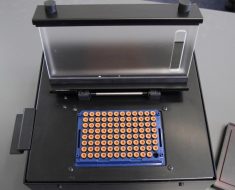NEW YORK (Reuters Health) – Early results suggest that left bundle branch area pacing (LBBAP)-optimized cardiac resynchronization therapy (LOT-CRT) is feasible and safe, and offers greater electrical resynchronization compared with conventional biventricular pacing (BiV-CRT).
LOT-CRT “could be an alternative option, especially when only suboptimal electrical resynchronization is obtained with BiV-CRT,” the study team writes in the journal Heart Rhythm.
They point out that CRT based on the conventional biventricular pacing technique may lead to broad QRS and suboptimal response.
Dr. Marek Jastrzębski of Jagiellonian University, in Krakow, Poland, and an international team of interventional cardiologists assessed the feasibility and outcomes of LOT-CRT (in lieu of right ventricular lead) combined with coronary venous left ventricular pacing in 112 patients with advanced heart failure and broad QRS complex.
The addition of left bundle branch area or coronary venous lead was left up to the implanting physician, guided by suboptimal paced QRS and/or on clinical grounds.
LOT-CRT was successful in 91 of 112 patients (81%). The treatment led to significantly greater narrowing of QRS (from 182 ms at baseline to 144 ms, P<0.0001) compared with BiV-CRT (170 ms, P<0.0001) and LBBAP (162 ms, P<0.0001).
At follow-up of at least three months, ejection fraction improved to 37%, left ventricular end-diastolic diameter decreased to 59 mm, NT-pro-BNP decreased to 2,514 pg/ml, pacing parameters were stable, and clinical improvement in New York Heart Association (NYHA) class was noted in 76% of patients.
These results suggest that LOT-CRT “may provide an alternate, individualized, more tailored approach to CRT in patients with advanced peripheral conduction disease,” the study team says.
They note that this analysis represents the “mid-term follow-up of the LOT-CRT technique in non-consecutive patients with advanced heart failure and broad QRS complex. It addresses pertinent initial questions related to the rationale behind this new pacing method and provides data on its safety, feasibility and outcomes.”
“The major limitation of this observational study was the non-consecutive patient design and lack of uniform criteria to select patients for LOT-CRT rather than for BiV-CRT or LBBAP alone leading to potential selection and operator bias,” the team adds.
They say randomized controlled trials comparing LOT-CRT and BiV-CRT are needed.
The study had no specific funding. Dr. Jastrzebski has received consultant fees from Medtronic.
SOURCE: https://bit.ly/37CnRiy Heart Rhythm, online July 30, 2021.
Source: Read Full Article





